Imagine descending into the tranquil depths of the ocean, where a kaleidoscope of life awaits. Among these underwater marvels are the nudibranchs, often referred to as the ‘dazzling gems of the deep’.
These tiny creatures are a hidden treasure, overlooked by many but adored by those who know where to look. With their vibrant colours and intricate patterns, nudibranchs are more than just a spectacle; they are many underwater macro photographer’s dream subject and a diver’s delight. As you glide through the waters, each sighting of a nudibranch is like uncovering a rare, living jewel.
Their delicate bodies, adorned in hues that seem too vivid for nature, captivate the eye and the imagination.
It’s no wonder that scuba divers around the world seek these enchanting creatures, aiming to immortalise their ethereal beauty through the lens of a camera.
DISCOVERING THE ENIGMATIC SEA SLUGS
Nudibranchs, often likened to the butterflies of the ocean, are captivating members of the sea slug family, distinguished by their vibrant colours and intricate shapes.
With over 3,000 known species, and likely many more awaiting discovery, they inhabit oceans worldwide, from shallow reefs to deep sea floors, including the frigid waters beneath Arctic ice.
Their remarkable diversity ranges from tiny specimens to foot-long giants, each adapted for survival through mimicry or bold displays to deter predators.
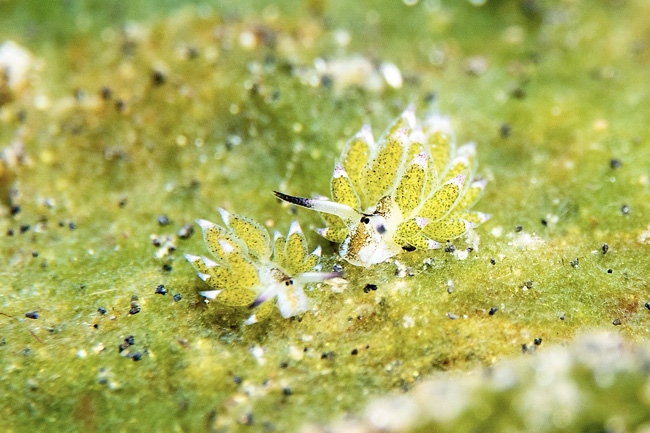
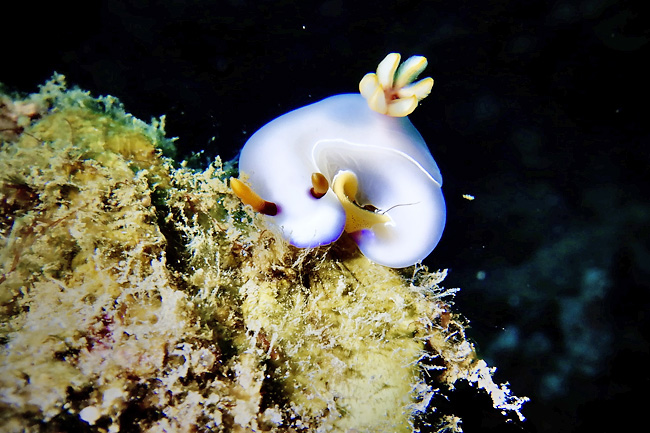

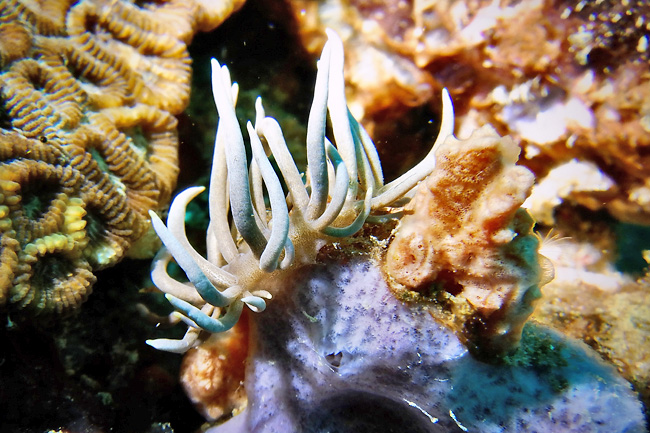
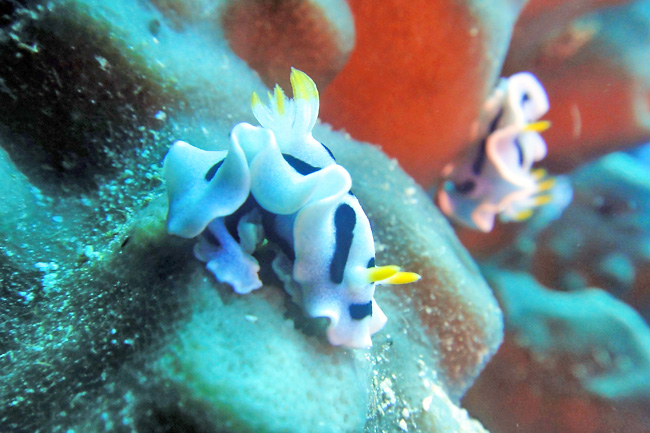

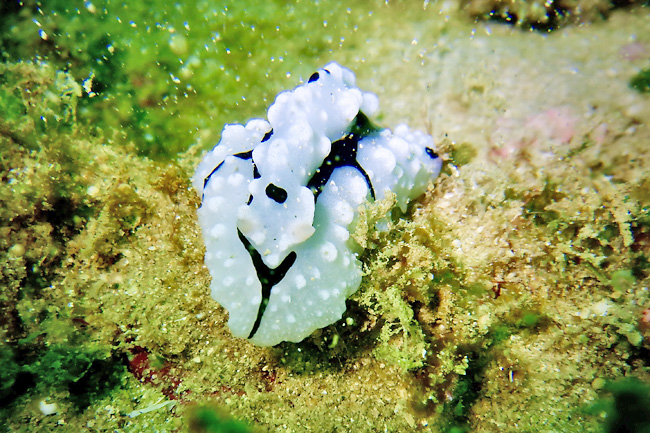
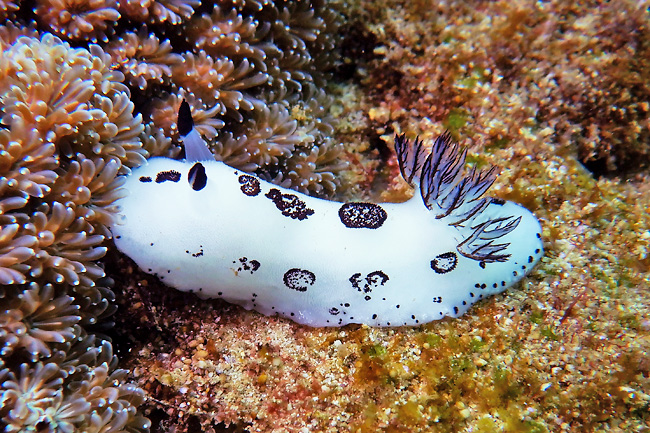
Their habitats mirror their varied appearances, from temperate to tropical waters, where they thrive among coral reefs, rocks, and sea grasses.
Despite their diminutive size, nudibranchs play pivotal roles as both predators and prey, contributing to the intricate marine food web.
Notably, some species, like the coveted ‘Shaun the Sheep’ nudibranch, host photosynthetic algae, harnessing solar energy through a symbiotic relationship.
In essence, nudibranchs are not only visually stunning but also vital components of marine ecosystems.
NUDIBRANCHS AESTHETIC ALLURE
Renowned for their kaleidoscopic colours and intricate patterns, nudibranchs are a photographer’s dream beneath the waves. Despite their unassuming name, these sea slugs are anything but ordinary, boasting a mesmerising spectrum of hues from electric blues to fiery reds.
Their diverse shapes, from flowing cerata to geometric patterns, showcase nature’s artistry.
Their vibrant colours serve as a form of communication, signalling toxicity to deter predators, while providing striking imagery for underwater photographers against muted underwater landscapes. Their slow movements and lack of protective shells make them ideal subjects, often fitting entirely within a single frame for macro photography.
Spotting a nudibranch during a dive is akin to finding a hidden gem, requiring keen observation and patience. Each photograph captures the intricate beauty of these overlooked ocean inhabitants, bringing attention to the wonders beneath the waves. These images serve as proof to the diver’s skill and dedication, reminding us of the intricate treasures awaiting discovery beneath the surface.
GUARDIANS OF MARINE ECOSYSTEMS
Nudibranchs are not just visual spectacles of the ocean; they play a critical role in the health and balance of marine ecosystems. These small creatures are a vital part of the ocean’s biodiversity, contributing to the intricate web of life under the sea.
Ecologically, nudibranchs are important predators, feeding on a variety of marine organisms, including sponges, anemones, barnacles, and occasionally other nudibranchs.
They can store the toxins from these preys in their own bodies, using them as a defence mechanism against predators.
This unique ability not only protects the nudibranchs but also helps control the populations of their prey, ensuring a balanced ecosystem. Nudibranchs also contribute to the health of coral reefs. By feeding on sponges and other organisms that compete with corals for space, they help maintain a balance that allows coral colonies to thrive.
CHALLENGES FACING NUDIBRANCH SURVIVAL
Despite their resilience and adaptability, nudibranchs face several challenges and threats in their natural habitats. The primary concerns for these delicate creatures stem from environmental changes and human activities.
Climate change poses a significant threat to nudibranchs. Rising ocean temperatures can lead to habitat loss, especially in sensitive ecosystems like coral reefs where many nudibranchs reside. Warmer waters can also affect the distribution and abundance of their prey, disrupting the delicate balance of their diet.
Pollution is another critical issue. Chemical pollutants, plastics, and other forms of marine debris can contaminate the waters nudibranchs inhabit.
These pollutants can be ingested by the nudibranchs directly or indirectly through their prey, leading to health problems or even mortality.
In response to these threats, conservation efforts are being made to protect nudibranchs and their habitats.
Marine protected areas (MPAs) such as Sipadan Island in Malaysia – which requires limited permits for scuba divers are established to safeguard critical ecosystems, and environmental monitoring programmes are in place to track the health of nudibranch populations.
Researchers and conservationists are also working to raise awareness about the importance of nudibranchs and the need to preserve the marine environments they inhabit.
This was also opted by scuba divers who often photograph them as one way to raise awareness of the fascinating creatures.
Nudibranchs are a symbol of the ocean’s hidden beauty and complexity, and as scuba divers and admirers of the natural world, our encounters with these remarkable creatures remind us of the fragile wonder beneath the waves, urging us to protect and cherish our incredible marine ecosystems. – Nadzirah Malek-Webb


